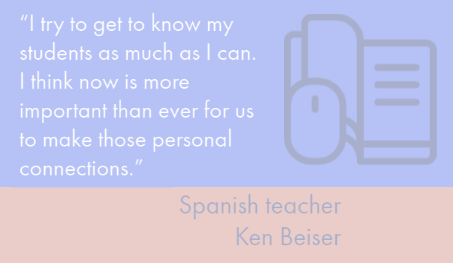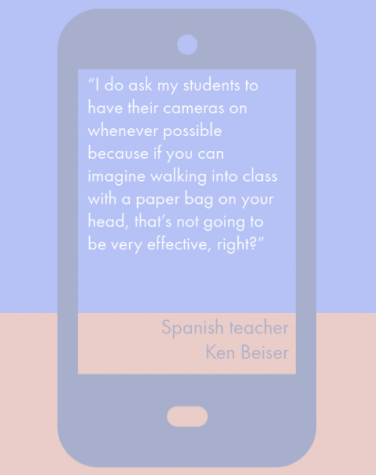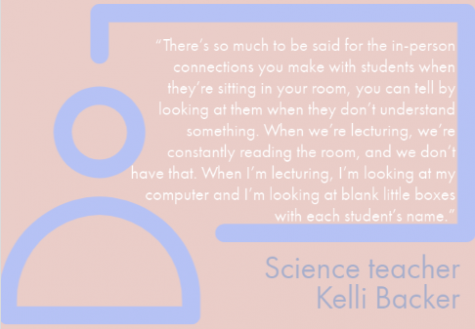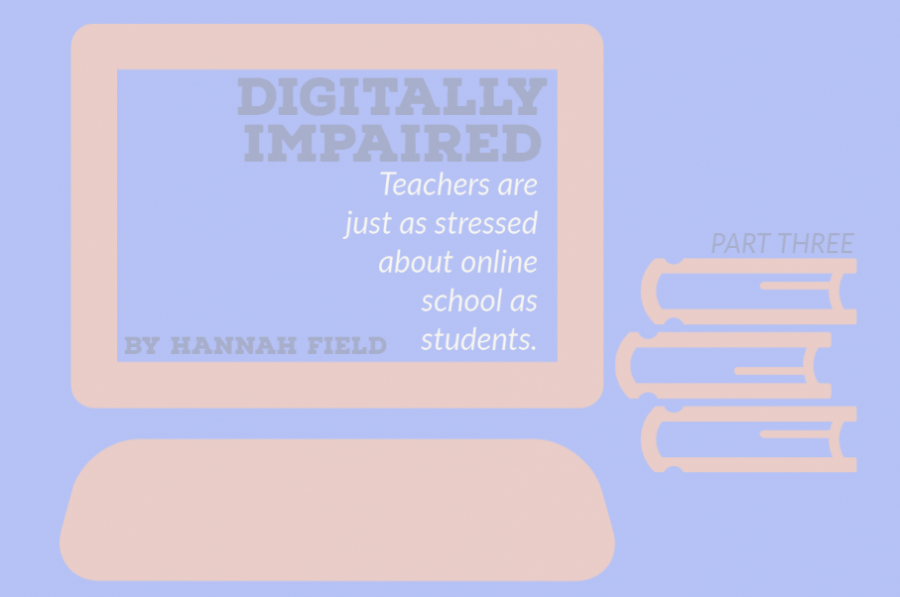It’s common knowledge that school looks a lot different this year. With every student suddenly doing class from their bedroom, it’s a scramble to stay on top of work and keep morale up. But while everyone is constantly struggling to figure online school out, they don’t realize that teachers are just as stressed.
Teaching is a heavy workload. It takes lots of preparation and time to plan lessons, grade assignments, and prepare tests with good coverage of each and every unit. Now, throw in entirely-online education with technological issues, extensive hours of screen time, and adjusting to new programs to adequately teach courses. West Albany’s teachers are working hard to adapt to this year’s neverending onslaught of change and compromise.
“I’m learning and teaching myself, but I appreciate the students having patience with me,” said science teacher Kelli Backer. “Right now, with 9 week quarters, we are moving at such a fast pace. I know that’s difficult on students as well as the teachers.”
Backer herself has experienced the immense stress that comes with the change.
“This year, with this style of comprehensive distance learning, every teacher in the district is back to square one,” said Spanish teacher Ken Beiser. “The first year of teaching is just immensely difficult. New curriculum, new staff. It’s overwhelming. That’s kind of what this feels like.”
Both teachers recog nize that they have been able to fall back on the rest of the staff for help. At school, where Beiser chooses to work in his classroom, he’s able to see his coworkers, but only ever from a distance and with masks between them.
nize that they have been able to fall back on the rest of the staff for help. At school, where Beiser chooses to work in his classroom, he’s able to see his coworkers, but only ever from a distance and with masks between them.
Students don’t have that luxury. Many are working, cameras off, microphone muted, behind the scenes. Beiser realized that most of his students would be unrecognizable if he saw them in person because of how few times he’s seen them at all.
“I do ask my students to have their cameras on whenever possible because if you can imagine walking into a class with a paper bag on your head, that’s not going to be very effective, right?” Beiser said. “But I wholeheartedly understand that there are situations that would cause students to not want to have their cameras on.”
Yet teachers keep working.
Some teachers are even spending time well into the night working on lessons. “I did see an email from a teacher who said that she got to go to bed at 1:45 instead of 2 am,” Backer said. “I mean, if I were to grade every single day and lesson plan for what I’m doing the next day, I’d be working into the early evening hours every day, six or seven o’clock at night every day at least. Maybe till 10 o’clock at night some nights.”
But Backer has set a limit for herself. If she’s not done with work by 10, she shuts it all off.
Teachers aren’t just working toward securing student success; it’s also their goal to keep students motivated, safe, and generally all right amidst all of the change and seclusion that comes with distance learning.
That means supporting students and checking up on them when there is work that isn’t being turned in or poor attendance. Many teachers are also popping into breakout rooms on Zoom to encourage questions and connect on a more personal level.
“I think teachers genuinely care about students,” Backer said. “It’d been hard for them to really connect with pupils and learn what promotes the most academic success facing a screen and limited interaction, which is the opposite of what teachers want.”
Even though distance learning is heavily focusing on learning new material in new ways, a lot of it relies on student health.
“I don’t think that in good conscience I can only focus on academics,” said Beiser. “Every student’s situation is different right now, so I think my approach with students has to be very different.”

Beiser does ask that students requiring extra assistance because of difficult home situations or anything that could affect their academic performance bring it up beforehand with teachers. They can’t help if they don’t know what’s going on
Many teachers are doing their best to cater to what works best for students regardless of the circumstances. That means surveys, video lessons, and lots of experimenting. For some, however, staff have recognized a change in effort and quality of work.
“There are a few students who are excited because they’re doing as well as they have ever done in school because it’s online,” Backer said. “I think everybody is in this together and I just feel like the only way I would like is for our students to maybe be a little more engaged.”
“Everybody who I’ve interacted with on a district level wants this program to be successful. Sometimes we just don’t have the information we need to make this happen,”Beiser said. “Advocate for yourself. Go in with the attitude that everybody is trying their best. We’ll do this for as long as we have to and it’ll be as successful as it can be and that’s all we can ask of each other right now.”
Everyone’s certain of one thing: this won’t be hard forever. “I’d like that feeling where we’re not isolated on a ship all by ourselves,” Backer said. “We’re in this together; we’re helping each other.”



